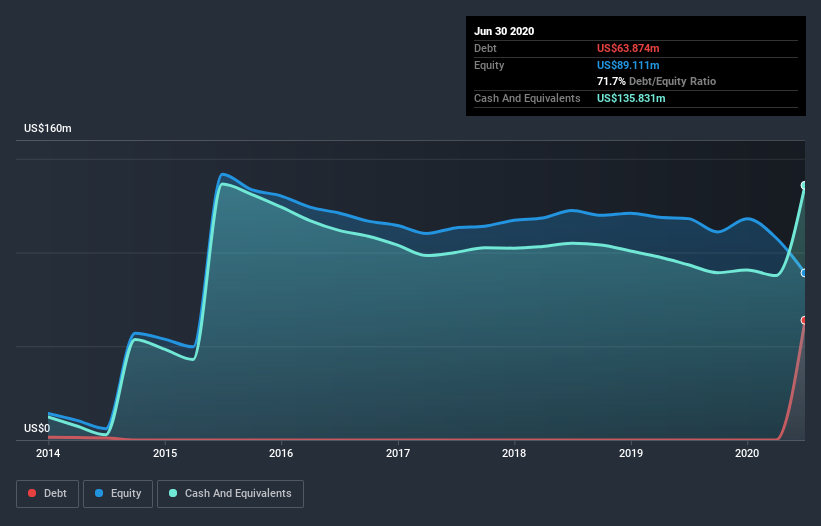Is Intersect ENT (NASDAQ:XENT) Using Debt Sensibly?

The external fund manager backed by Berkshire Hathaway's Charlie Munger, Li Lu, makes no bones about it when he says 'The biggest investment risk is not the volatility of prices, but whether you will suffer a permanent loss of capital.' So it seems the smart money knows that debt - which is usually involved in bankruptcies - is a very important factor, when you assess how risky a company is. As with many other companies Intersect ENT, Inc. (NASDAQ:XENT) makes use of debt. But should shareholders be worried about its use of debt?
When Is Debt Dangerous?
Debt is a tool to help businesses grow, but if a business is incapable of paying off its lenders, then it exists at their mercy. In the worst case scenario, a company can go bankrupt if it cannot pay its creditors. However, a more frequent (but still costly) occurrence is where a company must issue shares at bargain-basement prices, permanently diluting shareholders, just to shore up its balance sheet. Of course, the upside of debt is that it often represents cheap capital, especially when it replaces dilution in a company with the ability to reinvest at high rates of return. The first step when considering a company's debt levels is to consider its cash and debt together.
See our latest analysis for Intersect ENT
How Much Debt Does Intersect ENT Carry?
As you can see below, at the end of June 2020, Intersect ENT had US$63.9m of debt, up from none a year ago. Click the image for more detail. However, its balance sheet shows it holds US$135.8m in cash, so it actually has US$72.0m net cash.
How Strong Is Intersect ENT's Balance Sheet?
The latest balance sheet data shows that Intersect ENT had liabilities of US$14.1m due within a year, and liabilities of US$73.5m falling due after that. Offsetting this, it had US$135.8m in cash and US$7.65m in receivables that were due within 12 months. So it actually has US$55.8m more liquid assets than total liabilities.
This short term liquidity is a sign that Intersect ENT could probably pay off its debt with ease, as its balance sheet is far from stretched. Simply put, the fact that Intersect ENT has more cash than debt is arguably a good indication that it can manage its debt safely. When analysing debt levels, the balance sheet is the obvious place to start. But ultimately the future profitability of the business will decide if Intersect ENT can strengthen its balance sheet over time. So if you want to see what the professionals think, you might find this free report on analyst profit forecasts to be interesting.
Over 12 months, Intersect ENT made a loss at the EBIT level, and saw its revenue drop to US$85m, which is a fall of 23%. That makes us nervous, to say the least.
So How Risky Is Intersect ENT?
We have no doubt that loss making companies are, in general, riskier than profitable ones. And we do note that Intersect ENT had an earnings before interest and tax (EBIT) loss, over the last year. And over the same period it saw negative free cash outflow of US$34m and booked a US$61m accounting loss. But the saving grace is the US$72.0m on the balance sheet. That means it could keep spending at its current rate for more than two years. Overall, its balance sheet doesn't seem overly risky, at the moment, but we're always cautious until we see the positive free cash flow. There's no doubt that we learn most about debt from the balance sheet. However, not all investment risk resides within the balance sheet - far from it. For instance, we've identified 3 warning signs for Intersect ENT that you should be aware of.
At the end of the day, it's often better to focus on companies that are free from net debt. You can access our special list of such companies (all with a track record of profit growth). It's free.
This article by Simply Wall St is general in nature. It does not constitute a recommendation to buy or sell any stock, and does not take account of your objectives, or your financial situation. We aim to bring you long-term focused analysis driven by fundamental data. Note that our analysis may not factor in the latest price-sensitive company announcements or qualitative material. Simply Wall St has no position in any stocks mentioned.
Have feedback on this article? Concerned about the content? Get in touch with us directly. Alternatively, email editorial-team@simplywallst.com.



